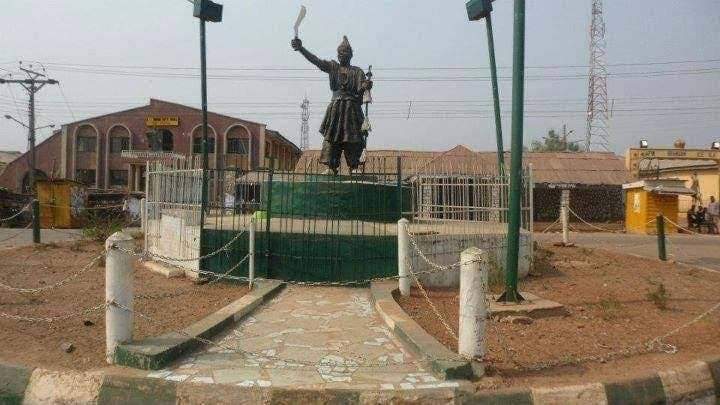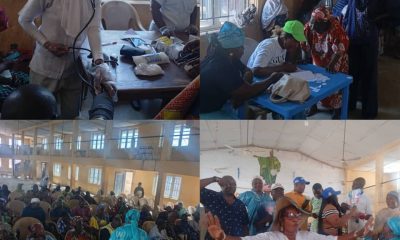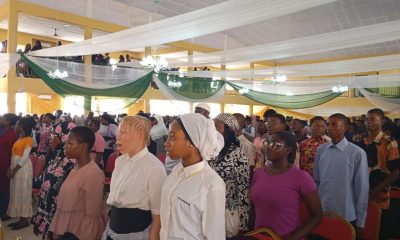South West News
History Of Ila-orangun

Ila-Orangun lies about 65km northeast of Ile-Ife and 90km southeast of Ilorin on the southern edge of the savannah. It is a part of the distinct dialectical Yoruba sub-group known as Ìgbómìnà or Ìgbóónà who originates from the north central and south western parts of Nigeria. The Igbomina group, presently, is mainly found in the eastern part of Kwara State, and the northern part of Osun State where Ìlá-ọ̀ràngún is located. The beautiful and serene town of Ila-Orangun share boundaries with Rore, Arandun and Aran-Orin to the North, Ora and Oke-Ila Orangun to the north-east, Oyan to the West, Otan-Ayegbaju to the South West and Oke-Imesi (in Ekiti State) to the east. More than 80 percent of Ila people are farmers and they grow crops like maize, plantain, cassava, pepper and cash crops like cocoa and kolanut. The people of Ila-Orangun are also skillful and professional palm wine tappers. They are globally recognized and known for this professing and thus this popular Yoruba statement was birthed: “Ila o l’oogun, emu l’ogun Ila” (Ila has no medicine other than palm wine). Also, they are known for local arts and crafts which include pottery, soap making and wood carving which is world acclaimed in the work of Fakeye who hails from Ila-Orangun.
The history of Ila-Orangun was traced to the reign of Oduduwa (the first Oba and founder of Yoruba tribe) in Ile-Ife when his seven grandsons decided to found some large political centers, one of which was Ila-Orangun. It is believed that Ifagbamila (Ajagunla), one of the sons of Okanbi, the son of Oduduwa, left Ile-Ife with his mother, Adetinrin, in about 12th century to found Ila and he became the first Orangun (king) of the town. The direct link Ila has to Ile-Ife made people refer to the town as a kingdom, and its king, Orangun, as the leader of Igbomina. Howbeit, traditions in other Igbomina towns such as Ajase, Isanlu-Isin, Oba, Owa, Oro, Ikosin and Igbaja claim that larger communities existed in Igbomina before Ila emerged, and that Ila is not the most powerful of all Igbomina towns. Other oral accounts of Ila history have it that Ajagunla was the son of Princess Adetirin who was the only daughter of Oduduwa. She migrated from Ile-Ife because of an unwanted pregnancy and settled in Ila-Kodomu also called Igbo-Ajagunla in the history of Ila-Orangun. These sources further claim that the people of Ila once lived separately before they finally settled together at their present site, Ila-Orangun, where Orangun Igbonnibi first reigned. The previous dispersed settlements include Ila Yara, Ila Magbon (later known as Ila-Orangun), Ajo, Ila-Okiri (Oke-Ila) Oke Molododo, Ilase and Ilawo. These settlements were originally not established by the Ila people. History has it that people were already living there before migrants form Igbo-Ajagunla occupied Ila-Yara and later, other settlements. It is worthy of note that the people of these pre-Ila-Orangun settlements migrated from one settlement to another. For example, Ila-Yara was deserted because of a royal dispute; another source traced the cause to be an outbreak of earthworm which forced the people to migrate from Ila-Yara to Ilawo, Ila Okiri, Ila Magbon and Ilase.
An account traced the etymology of the words ‘Ila’ and ‘Orangun’ to the period when Ifagbamila Ajagunla left Ile-Ife with half (Ilaji) of his grandfather’s (Oduduwa) wealth; and the Odu Ifa that instructed him to leave Ile Ife was “Ose meji” meaning “Oro mi gun” which means “my life plans are straight”. Thus the saying “Ìlàjì ni mo pín, ọ̀rọ̀ mí gún” became Ila-Orangun. However, it should be noted that no European observer in the precolonial period of Nigeria ever grasped the nature of the settlement at its inception. European travelers arrived too late in Igbomina and their reports only captured the horrific devastation of wars on Ila that began after the fall of Old Oyo empire.
-

 News4 days ago
News4 days agoOsun 2026: Action Alliance Elects Farinloye As Governorship Candidate, Pledges People-Centred Governance
-

 News4 days ago
News4 days agoFRSC To Prosecute Peller After Crash
-

 News4 days ago
News4 days agoOsinbajo, Adeleke, Aregbesola Inaugurate N34bn UNIOSUN Medical Research And Training Hospital
-

 News4 days ago
News4 days agoMuftwang Sets To Defect To APC















27 Comments